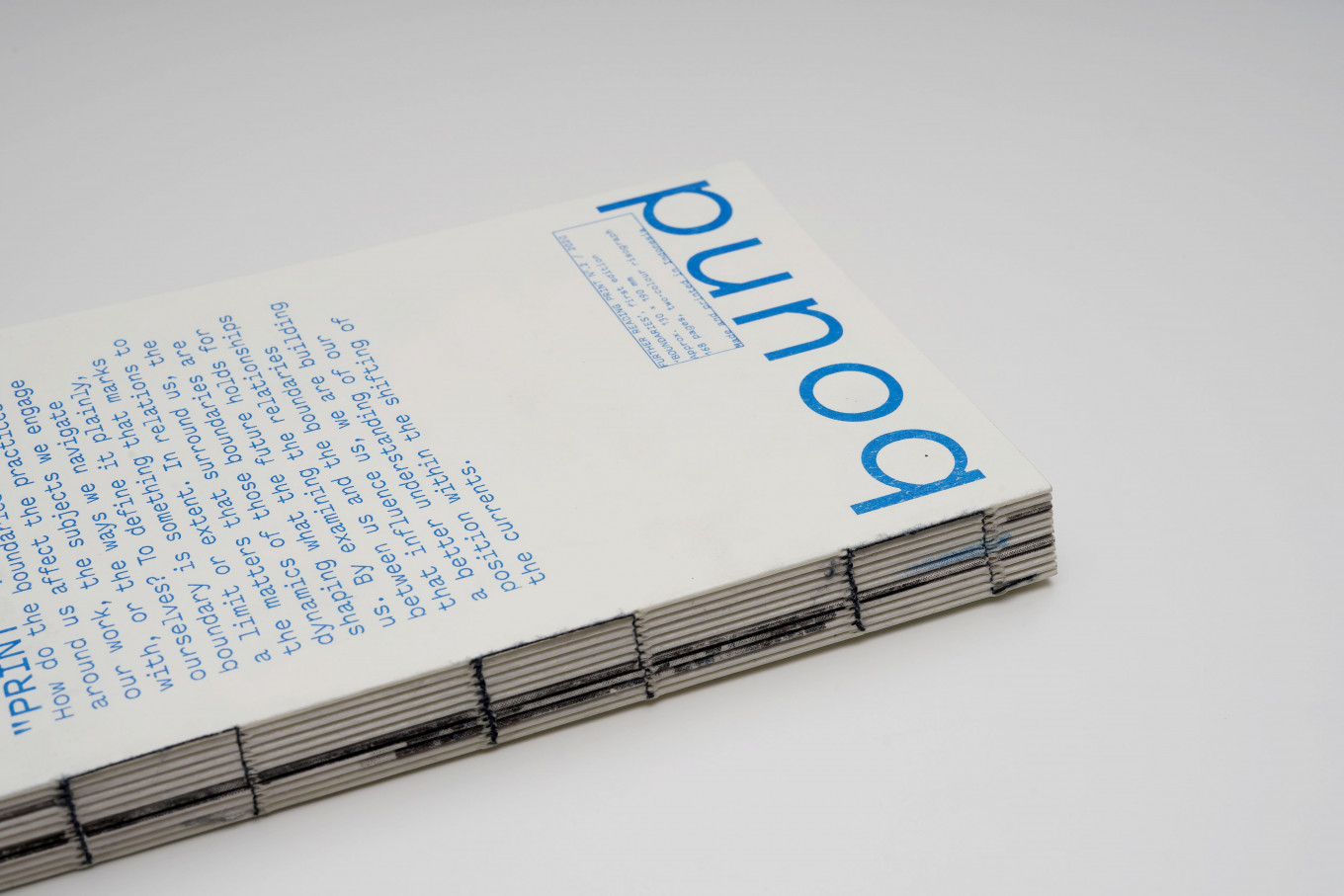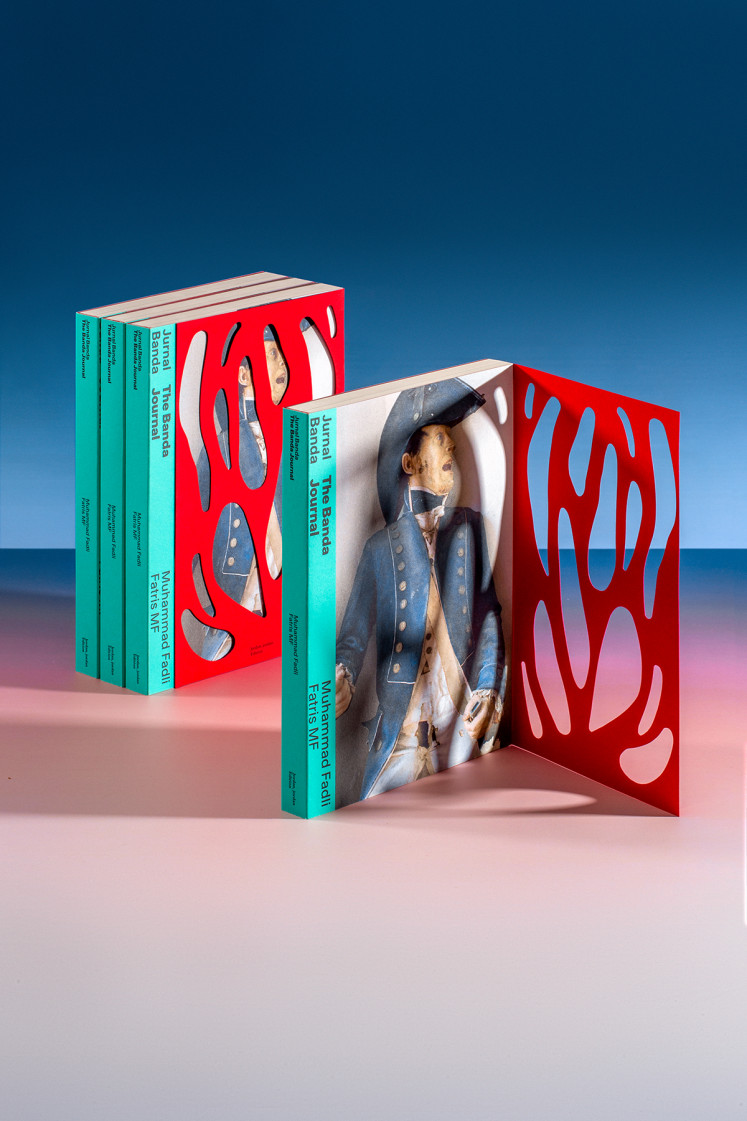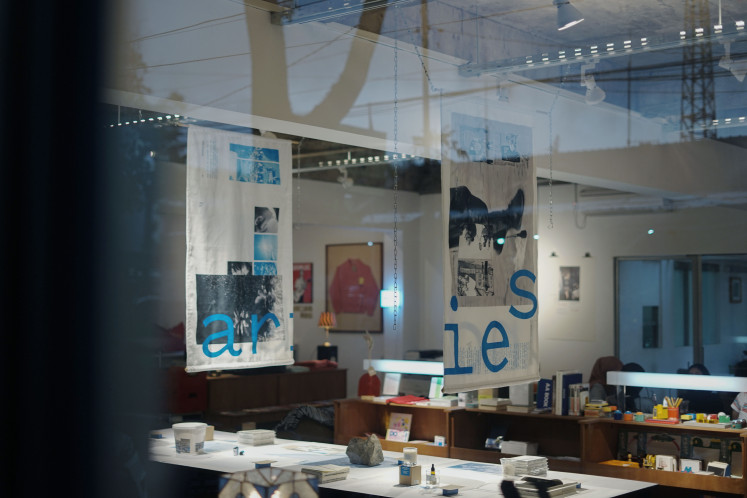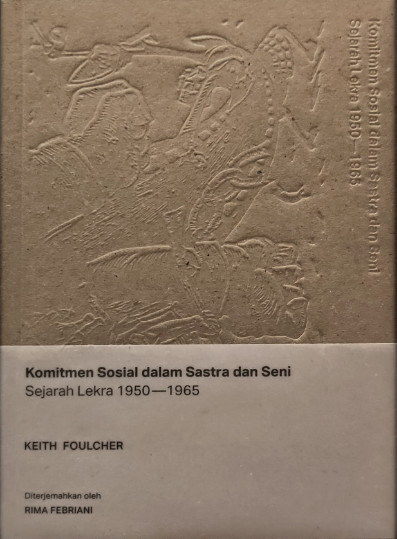Popular Reads
Top Results
Can't find what you're looking for?
View all search resultsPopular Reads
Top Results
Can't find what you're looking for?
View all search resultsDriven by design: Indie publishers bring back love for physical books
Indonesian indie publishers reignite excitement in books through unique designs and presentation.
Change text size
Gift Premium Articles
to Anyone
A
rya was 12 when he received his first book, a pirated copy of Andrea Hirata’s 2005 novel Laskar Pelangi (The Rainbow Troops), which in 2008 was adapted into a hit film. It began his love affair with reading and the 25-year-old translator’s passion for collecting books.
But as the internet and e-books became more common, Arya’s book-buying habit dwindled. Unless it was a title particularly “worth collecting”, he would opt to purchase the e-book version via Amazon’s e-reader gadget Kindle. It boils down to practicality; e-books were cheaper and would take up no physical space.
Other than nostalgia, there were simply fewer compelling reasons to keep spending money on physical books. The design and layout of most physical books were straightforward, so why pay more only for it to gather dust? With e-books, bad presentation mattered less. After all, it was all about the content, not the collectability factor.
Copywriter Runi Cholid, also an avid reader, expressed such sentiments.
“I’d rather read [books] digitally if I dislike the presentation. Buying books can be a hefty investment, it had better not be an eyesore.”
While a somewhat casual Twitter survey by the Communications and Information Ministry in 2020 showed that the presence of e-books did not hinder people’s interest in buying physical books, an article by the Indonesian Publishers Association (IKAPI) from May of this year points out that local publications experienced a decline in sales of more than 50 percent due to COVID-19.
But a handful of independent publishers felt uneasy about the local book industry long before the pandemic. They wonder if the real threat is not digitalization or a killer virus, but a stagnant ecosystem that lacks creative drive and diversity.
Far from being an eyesore, Indonesia’s indie publications underline the depths of design, intertwining literature with eye-grabbing presentations to challenge how books can be perceived and appreciated.
Unique look: The Banda Journal offers an intricate design. (Jordan, jordan Édition./Courtesy of Jordan Marzuki)Thirst for exploration
In 2019, Jordan Marzuki, a Jakarta-based designer and publisher of Jordan, jordan Édition, had gotten tired of his ideas being shrugged off by traditional publishing houses whose market-oriented approach left little room for explorations.
“I thought, ‘Why not publish your own work? That way, you can also design [the book] freely without restrictive directions’”, Jordan told The Jakarta Post.
Popular for his eccentric, nonconforming presentation (he is also a visual artist and short film/music-video director), Jordan admitted that it had always been his dream to “have my own [publishing house] that does not conform to trends and can collaborate with people who have all these crazy ideas.” Jordan, jordan Édition has published three books: Jordan’s own War, Astronaut, Death, Violence, Floating Mountain and Roman Soldiers (2020); Fantaisie Érotique (2020), and Muhammad Fadli and Fatris MF’s The Banda Journal (2021).
His design principles are integral to the architecture of the books, which goes beyond traditional hardcover or paperback design. Take The Banda Journal, whose Swiss-bound build is playful with bold colors and textures in reference to the Bandanese nutmeg, or Fantaisie Èrotique, whose cover surprises with its red-and-glitter combo.
“I always encourage visual contexts that can escape my comfort zone, so that our products can be explorative and independent of narrow conventions and genres.”
For Kelana Wisnu, editor-in-chief of Bandung-based Pustaka Pias, indie publications can be an alternative platform that casts light on things left unspoken, as shown by their books Komitmen Sosial dalam Sastra dan Seni: Sejarah Lekra (Social Committment in Literature and the Arts: The History of Lekra) and FINKS: Bagaimana CIA Mengelabui Para Penulis Besar Dunia (Finks: How the CIA Tricked the World's Best Writers).
Kelana found solace in initiatives like book clubs or pop-up libraries and believes that indie publications can be home to wider discourse. “To some extent, we are trapped in these Eurocentric ideas that shape and limit how we see the world. Against this backdrop, we established Pustaka Pias”, he wrote.
The publication has launched books with notable aesthetics, such as earthy tones and delicate etchings on the covers. “Interactive visual elements are essential to us. For example, the book FINKS has an implicit message, as the author put it: ‘When democracy dies, it glows in the dark’”, said Kelana, referring to FINKS’ cover, which lights up in the dark.
On Komitmen Sosial dalam Sastra dan Seni . . ., the embossed cover illustration (directed by graphic designer Sidney Islam) emulates a work of wood art (“Cukil Kayu”, 1964) by Arifin, an artist who utilized his works to make political statements.
The illustration speaks volumes on Indonesia’s multi-faceted history, according to Kelana: “[history] is not just about writing the past, but also an arena to imagine the future. And I think many are ready to accept alternative narratives about our world today.”
Read further: The launch of 'Further Reading Print No. 2' at the Grammars venue. (Further Reading/Courtesy of Januar Rianto)Design as method
While the subject of design is often associated with—or reduced to—marketing strategy, alternative publishers who perceive design as their discipline beg to differ.
Further Reading, a Bandung-based publisher have been embracing this practice since its inception in 2017. “It was criticism of ‘design’ that became our steering power. [Design] was and still is overly simplified. ‘Graphic design’ is not all about branding, the same way ‘publishing’ isn’t just about printing or launching things online”, stated Januar Rianto, the publication’s editor-in-chief and founder of design firm Each Other Company. “It’s a way of seeing […] we treat design as our way of working instead of an outcome.”
Apart from operating as a publishing platform, Further Reading regularly curates and initiates design-focused exhibitions and workshops (including their London-based collateral design exhibition "Ways of Reading" in 2019). Today, their publications—known for their application of risograph printing—have reached over 10 countries across Asia, Australia, Europe and America.
“Print publications need to be both timely and timeless to sustain,” said Januar, “Further Reading started because somebody once said ‘designers don’t read text, they look at images’. We are doing exactly that: using design to get people to read more. I think it’s worked so far.”
The future is print
Independent publishing houses occupy a unique place in the literary industry. For much of their history, alternative publications operated at their own pace, operating outside of the mainstream best-seller lists. Their role has now shifted to introducing a new type of perspective on books for a mainstream audience.
“I’m so excited to see many micro-publications bringing bolder subjects to the table. They also combine narratives, graphics and print treatments really well”, said Ardo Ardhana of Bandung-based Norrm Press and recently established book/gift shop Grammars, where books by the aforementioned publishers and local creatives alike can be spotted.
Embossed beauty: Cover design of 'Cukil Kayu'. (Pustaka Nias/ Courtesy of Pustaka Pias.)Like his publisher friends, Ardo is fond of the design subculture which he owes to his memories of 1990s Bandung. “Grammars' small victory is beyond my expectations. Many young readers keep coming back! This indicates that there will always be a space for physical books in the market.”
This enthusiasm is felt by Danny Wicaksono, architect and initiator of the literary initiative Inisiatif Scriptura. “It is not cheap to publish books. Thankfully, more independent publishers managed to find their way around this situation to publish books with interesting content and design,” shared Danny, who observed that the younger millennial and Gen-Z generation were more receptive to changes and tasteful design.
“Books will be around for a long time, this type of knowledge preservation has withstood the test of time. After all, reading books is just more tactile and human.”














